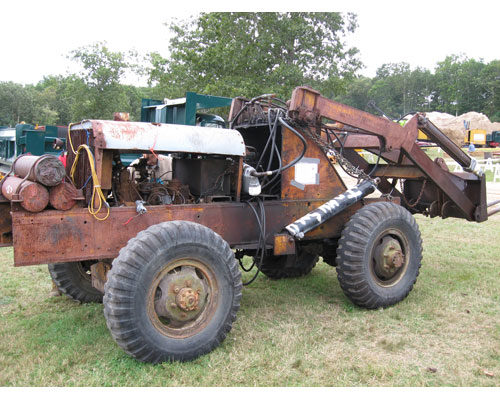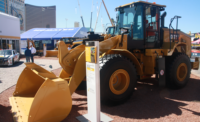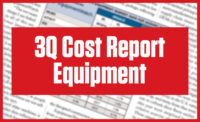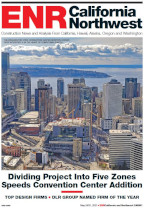At first glance it looks like a normal construction site. Earthmoving equipment proceeding orderly toward a pesky hill slated for removal, and workers in fluorescent vests waving operators past the caution tape and barriers toward the jobsite. The only incongruity is a bright, lime-green 1959 Euclid TC-12 bulldozer rolling past an orange 1928 Wilford Model B shovel.
And for every familiar CAT logo there is a Bucyrus Erie or a Cletrac, with the odd Oliver thrown in the mix. In fact, this one hill has at least two-dozen machines working on it at once, with a growing ring of spectators held in rapt attention.
The machines were towed in on flatbeds over the course of three days. Dozens were lined up along the roadway, polished to a shine, with plaques listing their pedigrees.
More than 80 years of construction history was brought together on Sept. 10-12 in Richmond, R.I., for the 2010 Convention of the Historical Construction Equipment Association (HCEA). Crawler-dozers, cable-driven excavators, tractors and dump trucks were arrayed side by side along the length of the fairgrounds.
Founded in 1986, the HCEA is intended to bring together collectors and restorers of antique construction equipment. The organization also provides a conduit for equipment enthusiasts across the country to indulge their obsession and trade construction-equipment literature and collectables. HCEA President Larry Kotkowski explains, “The construction equipment, the memorabilia and everything—that’s just an excuse to bring us guys together. If you were here by yourself with just all the machinery, it wouldn’t be any fun at all. It’s just a reason to get like-minded people together.”
Unlike the organizers of other classic vehicle shows, the HCEA chapter running the convention, the Northeast Rockbusters, aren’t afraid to get their toys a little dirty. “We encourage outsiders to bring their equipment,” says Sam Sicchio, president of the Northeast Rockbusters. “A lot of the equipment is owned by members, and we do require people to join the association to run their equipment on this site, mainly for insurance reasons.”
But the project is still constructive. “We were looking for a place to play in the dirt,” says Kevin MacGuire, a Rockbusters member. “We said, ‘Give us a place to play, and we’ll give you a flat surface for your fairgrounds.’ ” The Washington County Fairgrounds needed a larger parking area, so a deal was struck.
Many of the machines on the site were operated by their owners, but there were exceptions. William Tedesco, a Rockbuster member with a reputation for having a knowledge of older machines, operated a Lorain 80J shovel-front owned by contractor John Vasel. “A lot of the other guys here don’t understand nothing about the machines,” Tedesco says. “They know how to paint them up and make them look pretty, but they don’t know how to fix them. I’m already pretty well known, so they ask me to come over and find out what’s wrong.”
Tadesco’s reputation is well deserved. “I started in 1952, learning a shovel in a gravel pit. I was 12 years old. It wasn’t legal, but we just didn’t get caught. I was riding on machines when I was seven, eight years old. Eventually I started working with the machines, started playing with them. The guy running the gravel pit was loading and hauling himself, and when he got out I’d get in the shovel and play with it until he came back. One time I didn’t get out fast enough, and he caught me and said, ‘Well, load it up.’ And I did, and it has been yahoo from then on,” he says.
One noticeable absence at the show is steam-powered machinery, which is largely due to prohibitive insurance costs following an accident in 2001 at a fair in Medina, Ohio, in which five people were killed when an antique steam engine exploded. The HCEA convention only allows the operation of gas- and diesel-powered machines, and all operators are required to undergo on-site safety training.
The convention drew spectators and HCEA members from across the country and around the world. One HCEA member trucked in his Caterpillar CW 10 pan scraper and DW 10 tractor on a flatbed from Nebraska, and Rockbuster members running the information booth were surprised to meet equipment enthusiasts from Switzerland and Australia.
HCEA archivist Tom Berry attempted to describe the broad appeal. “It’s not just those in construction. From all walks of life, people just like the history of this stuff,” he says.
Still, for some fans these events are a pilgrimage. Having lunch in the back of her truck with her daughter, Kathy Bosker says her husband has brought them all the way from Michigan to this and many other antique equipment shows. “We do this every year. It’s sort of a Dad trip,” she says.
Phil Speno, an operating engineer with Local 825 in Trenton, N.J., walked away almost dumbstruck. “It was great. You’ve got to think about it symbolically—the love of machines, the love of labor. Really great stuff,” Speno says.
Rockbusters member Annette Baillargeon offers her own, more straightforward explanation. “It’s interesting to see how they did things way back, but it’s definitely big boys with their big-boy toys.”
















Post a comment to this article
Report Abusive Comment